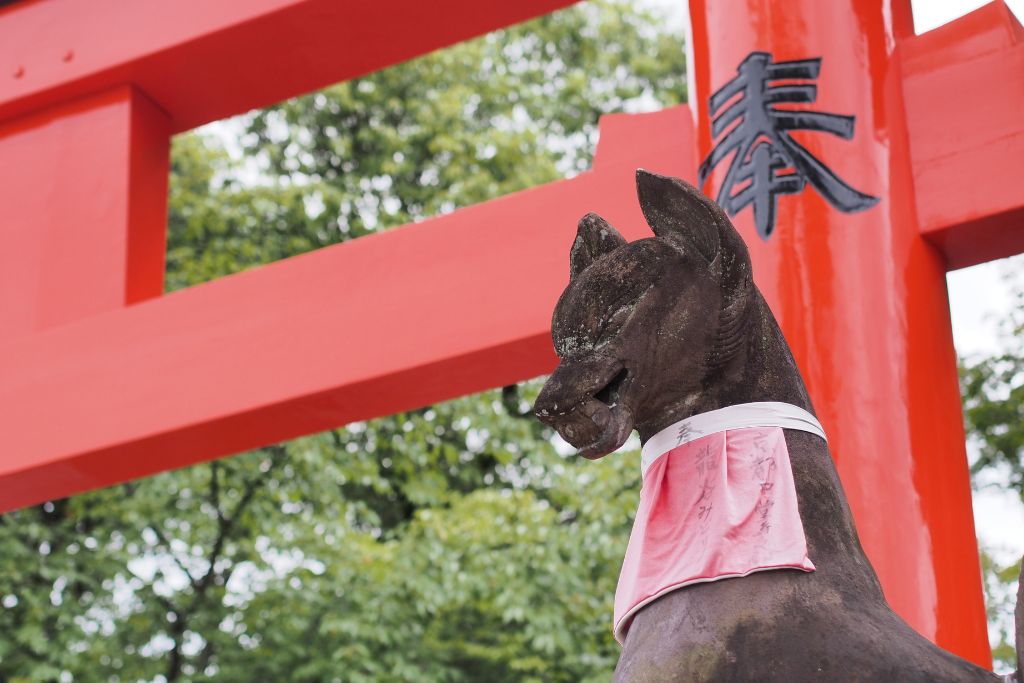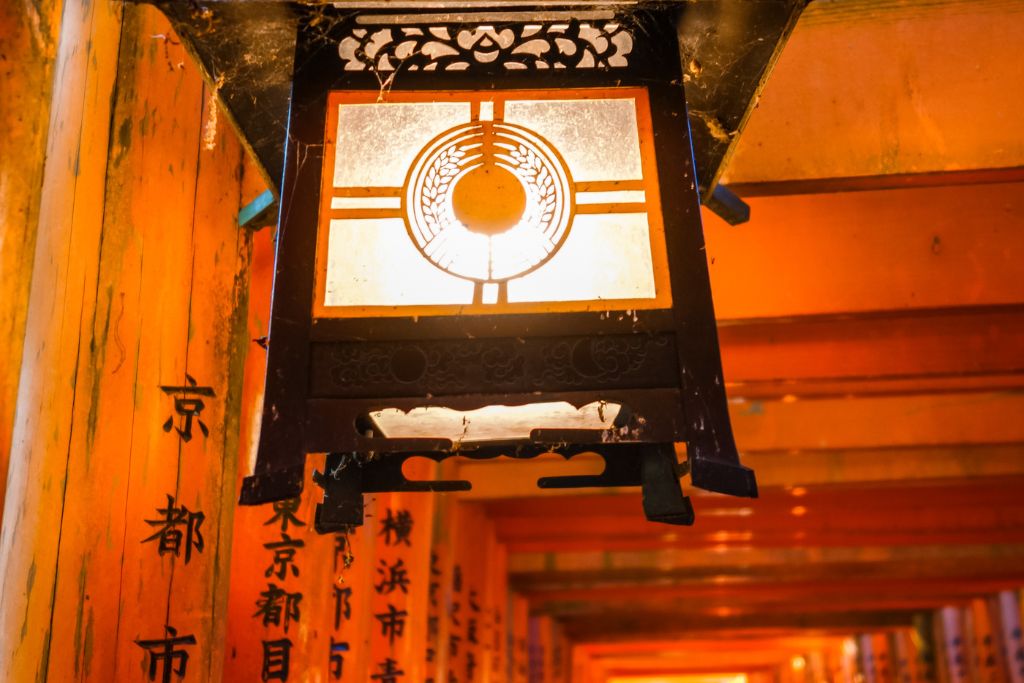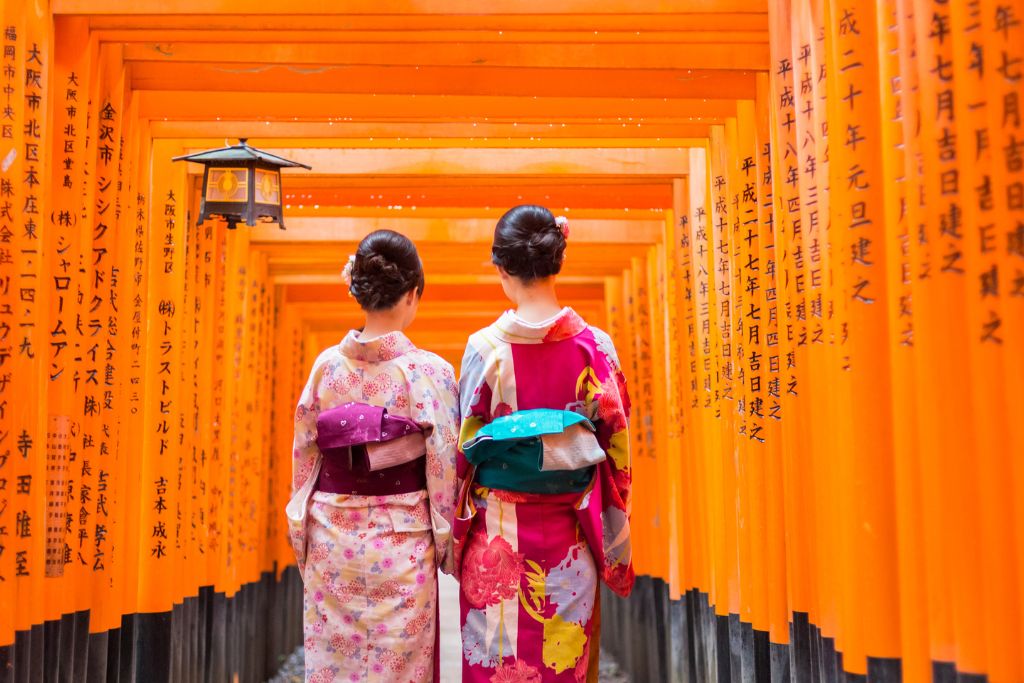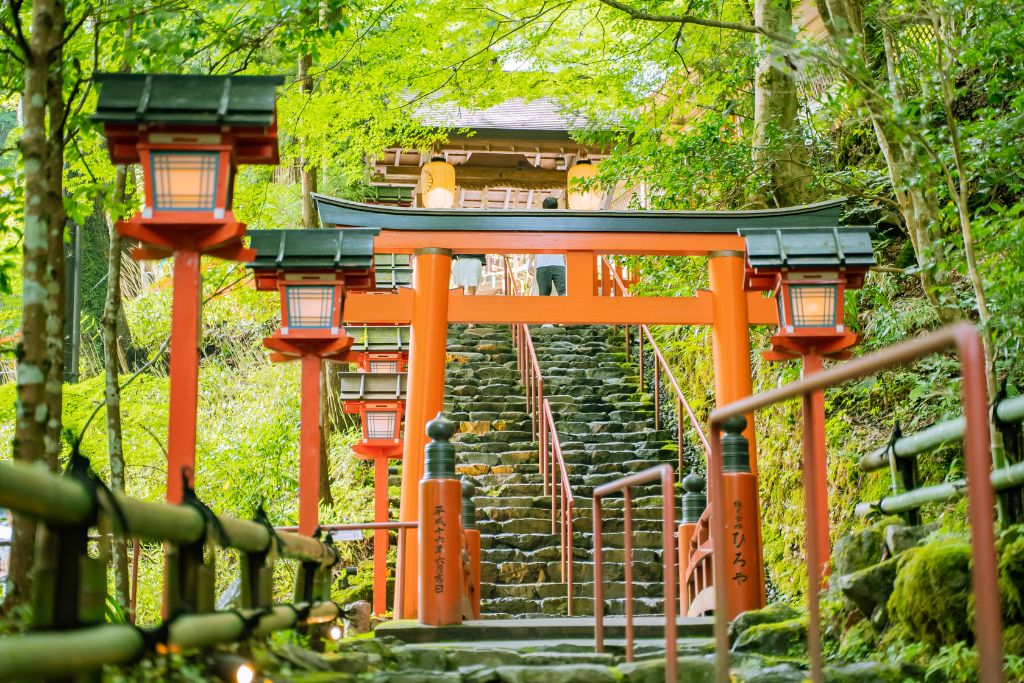Fushimi Inari Shrine, located in the city of Kyoto, celebrated religious heritage with a new line of flags. The shrine unveiled two new flags in commemoration of the Edo Period, which spanned from 1600 to 1868. The first flag is made out of paper and hangs from a white cotton bunting cord; it features a red kimono and blue yukata worn by shrine officials. The second flag is made out of cloth and hangs from a blue cotton bunting cord; it features a green kimono and white yukata worn by shrine members. Kyoto is home to an incredible number of religious tourist attractions, ranging from ancient temples to peaceful shrines. But one of the most iconic sites in Japan is without a doubt Fushimi Inari Shrine. Founded in 711, Fushimi Inari Taisha is a major Shinto shrine and the head of 30,000 other Inari shrines throughout Japan. It is known for its thousands of vermilion torii gates.
The Red Flag
As the most significant of the thousands of shrines dedicated to the kami Inari, the Fushimi Inari Shrine is one of Kyoto’s most popular tourist attractions. It’s famous for its thousands of vermilion torii gates that straddle the trails behind the main buildings and lead into the wooded forest at the base of sacred Mount Inari.
These parallel rows of torii gates were donated by Japanese businesses, their names inscribed on the back side of each gate. The torii gates are an important part of the Shinto religion and were designed to honor Inari, the god of rice, agriculture, business, and prosperity.

In addition to the torii paths, there is also a hiking trail that winds its way to the summit of Mount Inari (233 meters). Visitors can spend hours on this mountain hike but it’s recommended to use a reputable walking tour guide to avoid getting lost.
The White Flag
Located on the slopes of Mount Inari, Fushimi Inari Taisha is one of the most popular Shinto shrines in Japan. Its ten thousand torii gates (over 32,000 in total) are the most famous feature, but there are many other shrine buildings and statues to explore as well.
The shrine complex is comprised of worship halls at the base of the mountain connected via vermilion torii gate-lined paths winding up the heavily wooded heights. You’ll also see statues of kitsune, or foxes, thought to be messengers for the god Inari.

It’s a challenging hike up to the summit and it takes about two hours to get there, but the rewards are well worth it. Once you’re at the top, you can sit and relax with a cup of tea or enjoy the stunning views of Kyoto below.
The Blue Flag
Fushimi Inari Shrine is one of Kyoto’s most popular attractions, and it’s not hard to understand why. Its main temple structures, with their fox-shaped sculptures, are breathtaking to see.
The foxes are believed to be the divine messengers of Inari, the god of rice and agriculture. Throughout the shrine grounds, there are statues of foxes and tea stalls selling inari sushi (rice stuffed into pockets of aburaage, deep-fried tofu) and kitsune udon (wheat noodles in broth topped with aburaage).

After entering the shrine, it’s respectful to wash your hands with a water ladle at a chozuya. From here, you can hike up 233-meter-tall Mount Inari, where thousands of vermilion torii gates line the inner path.
The Green Flag
Overlooking the former capital of Kyoto from Inari Mountain, the orange gates (known as torii) of Fushimi Inari Shrine dot the landscape, attracting thousands of tourists of all faiths each day. In 2014, it was ranked the top tourist destination in Japan by Trip Advisor Travellers’ Choice.
Inari is the god of rice, agriculture, prosperity, and business and Fushimi Inari is a popular Shinto shrine. In addition to the ten thousand vermilion torii gates, two rows of dozens of smaller Senbon Torii line a winding path up the hillside behind the main shrine.

Each gate has been donated by a Japanese business and is printed with its name and date. Those who wish to honor Inari, ask for a wish, or say thank you to the kami can do so at these Senbon Torii. It’s an interesting and fun way to experience the shrine, even for those not familiar with the god of rice or the Japanese faith.
If you’re looking for a hidden gem to visit in Kyoto, Japan, be sure to check out the Fushimi Inari Taisha shrine. This beautiful shrine is located at the base of Mt. Inari and features stunning vermillion torii gates that wind through the mountainside. It’s a popular spot for tourists, but with a little exploring, you can find peaceful paths and serene spots that feel far away from the crowds. Don’t miss this unique and enchanting shrine on your next trip to Kyoto!








